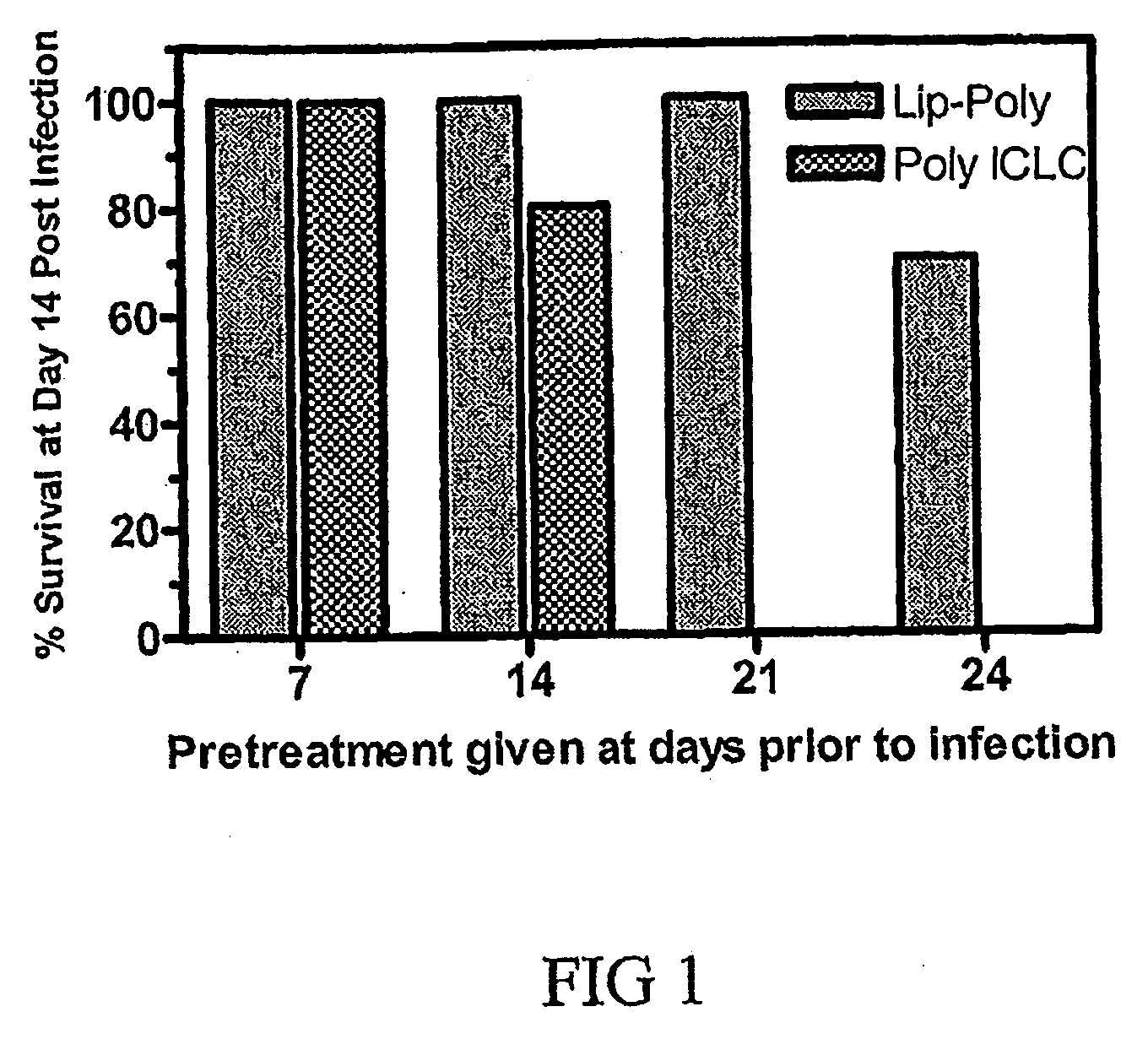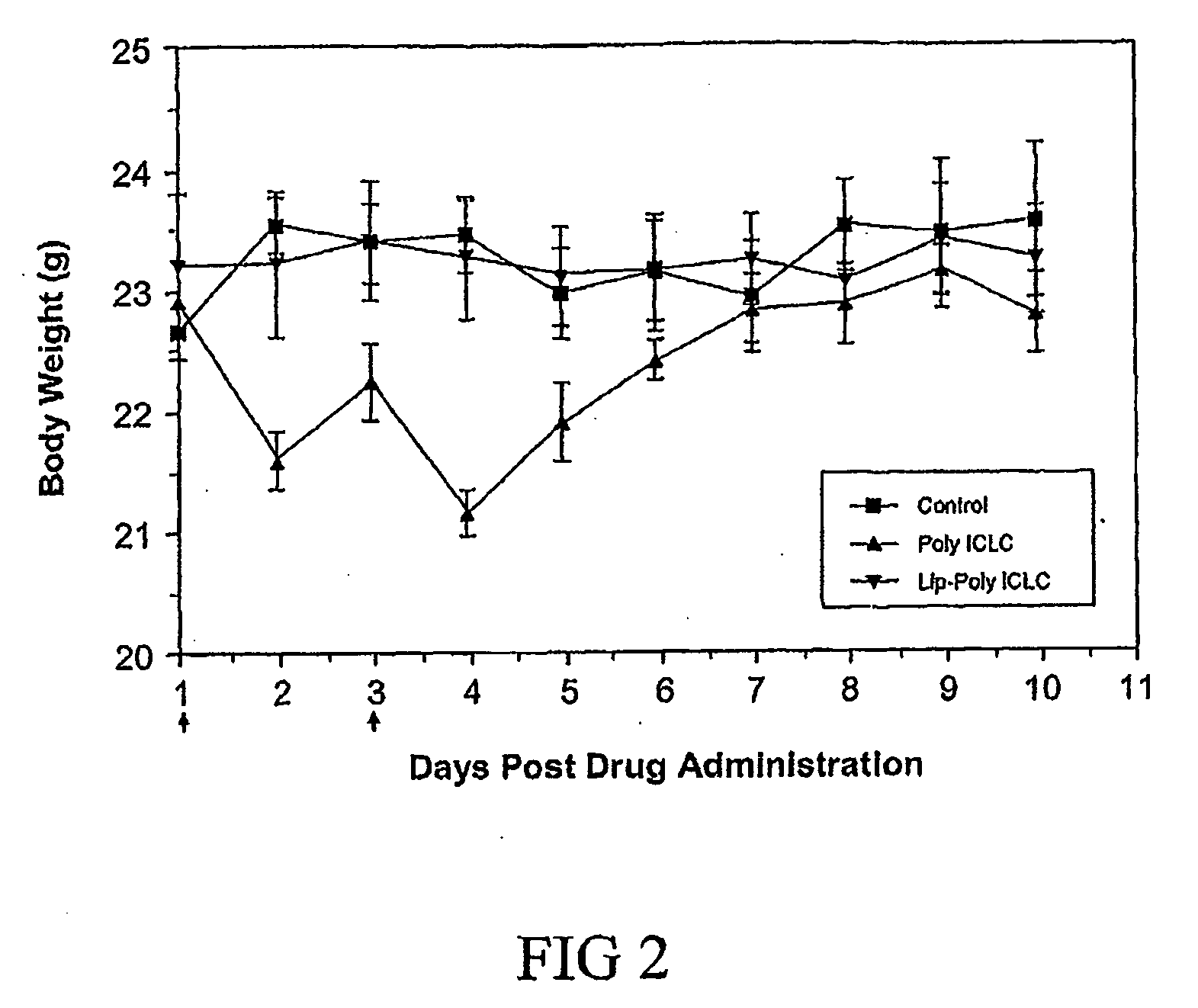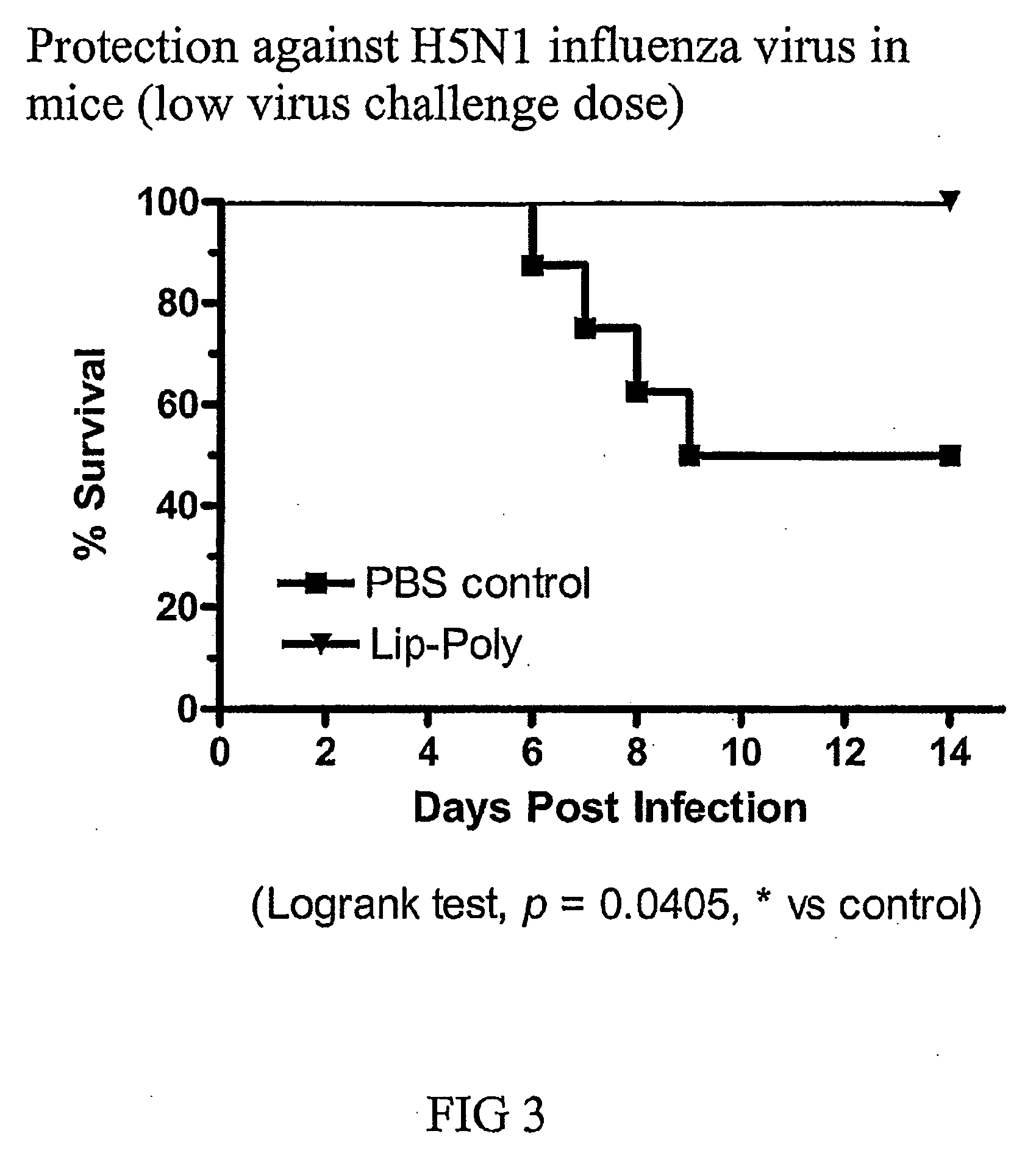Liposome encapsulated poly-iclc method to prophylactically treat an avian influenza viral infection
- Summary
- Abstract
- Description
- Claims
- Application Information
AI Technical Summary
Benefits of technology
Problems solved by technology
Method used
Image
Examples
Embodiment Construction
[0021]Poly ICLC
[0022]Poly ICLC was prepared by the Pharmaceutical Services, College of Pharmacy University Of Iowa (Iowa City, Iowa), and was provided by the National Institute of Health (Bethesda, Md.). Each milliliter of poly ICLC contained 2 mg poly I.poly C, 1.5 mg poly-L-lysine, and 5 mg carboxymethylcellulose in 0.9% sodium chloride.
[0023]Encapsulated-Liposome Poly ICLC
[0024]Liposomes are microscopic lipid vesicles consisting of one or more lipid bilayer(s) and aqueous compartment(s). The primary constituents of liposomes are usually a combination of phospholipids and steroid, such as cholesterol. The phospholipids can be positively, neutrally and negatively charged. Liposomes made from positively and negatively charged phospholipids are called cationic and anionic liposomes, respectively. DNA and RNA are usually negatively charged, therefore, cationic liposomes are the liposomes of choice for making liposomal poly ICLC formulation. The cationic phospholipid used for making li...
PUM
| Property | Measurement | Unit |
|---|---|---|
| Biological properties | aaaaa | aaaaa |
| Molar ratio | aaaaa | aaaaa |
| Therapeutic | aaaaa | aaaaa |
Abstract
Description
Claims
Application Information
 Login to View More
Login to View More - R&D
- Intellectual Property
- Life Sciences
- Materials
- Tech Scout
- Unparalleled Data Quality
- Higher Quality Content
- 60% Fewer Hallucinations
Browse by: Latest US Patents, China's latest patents, Technical Efficacy Thesaurus, Application Domain, Technology Topic, Popular Technical Reports.
© 2025 PatSnap. All rights reserved.Legal|Privacy policy|Modern Slavery Act Transparency Statement|Sitemap|About US| Contact US: help@patsnap.com



